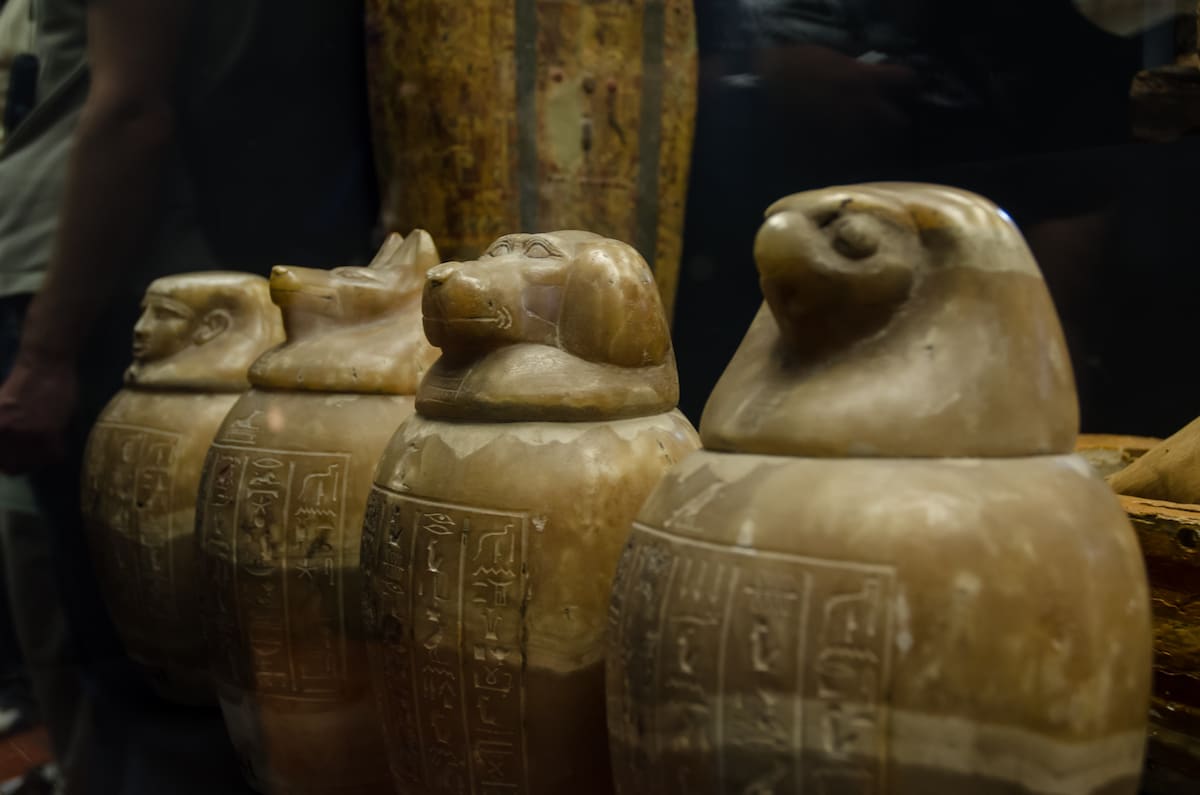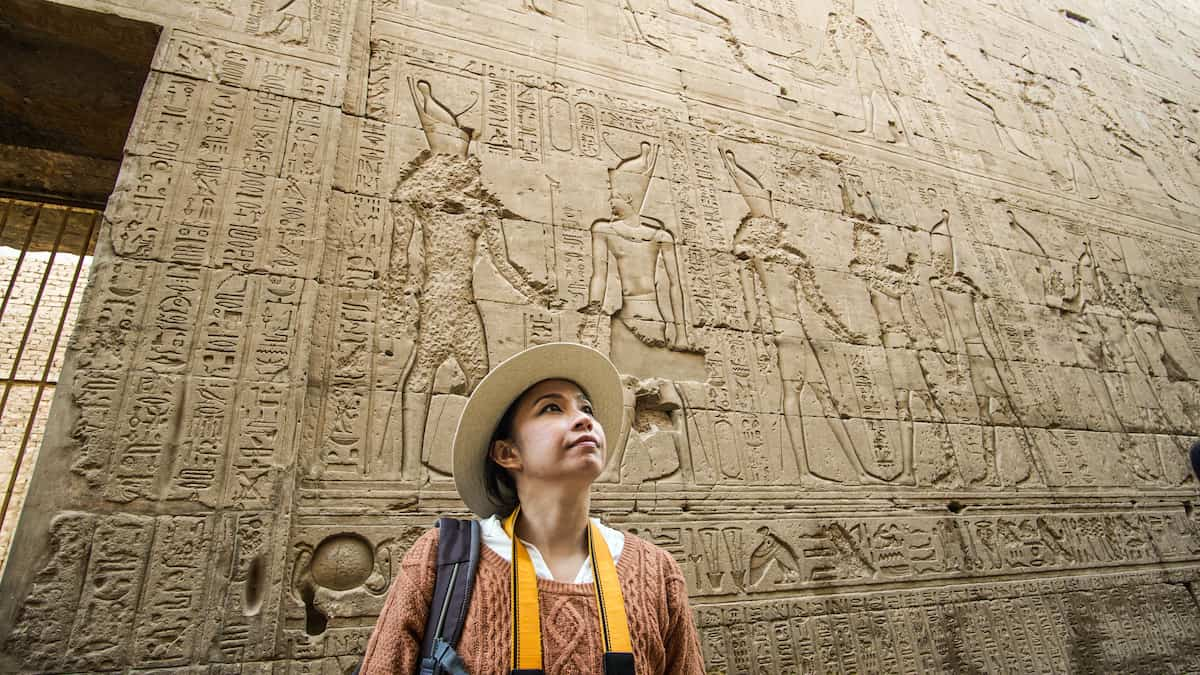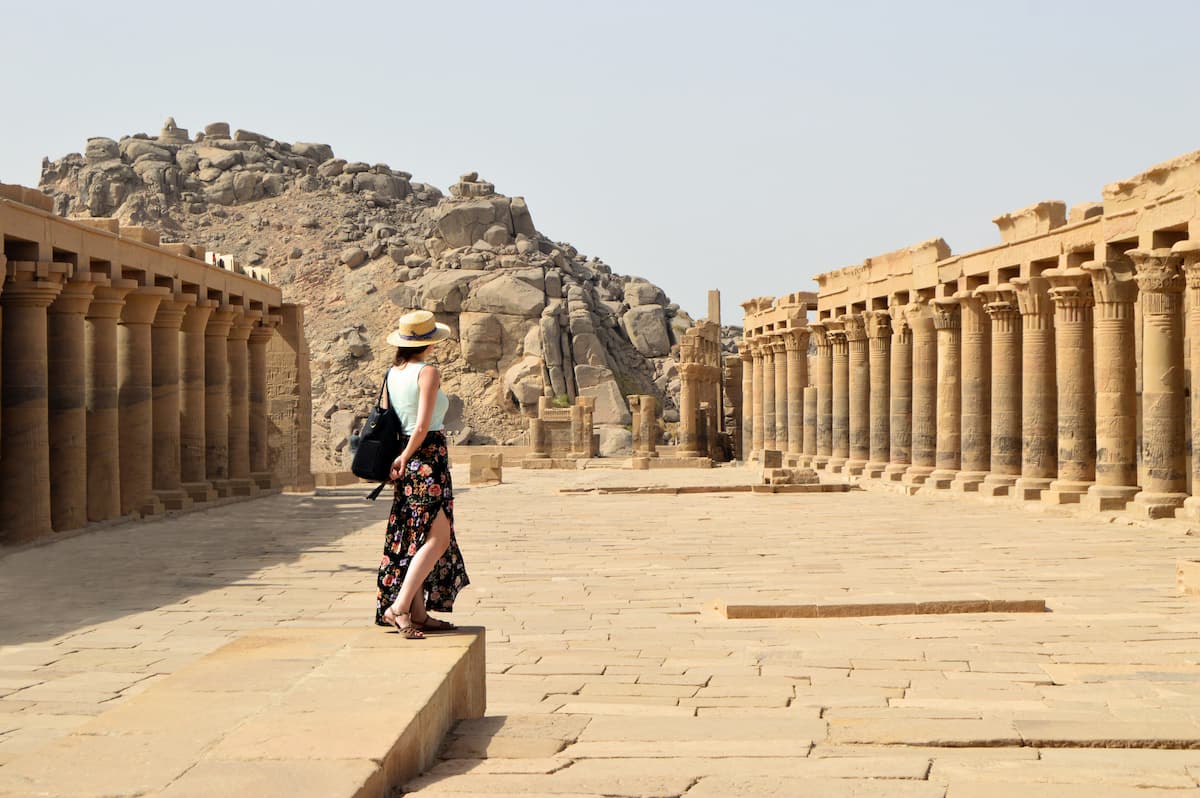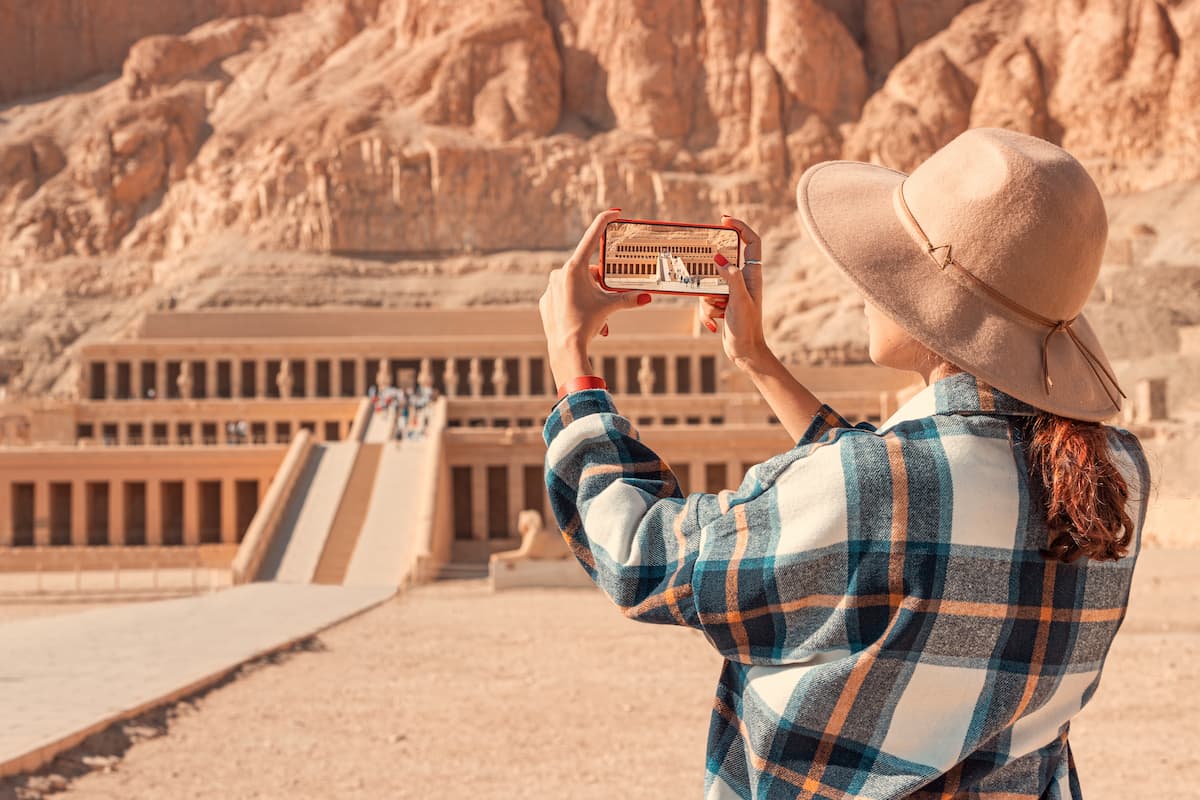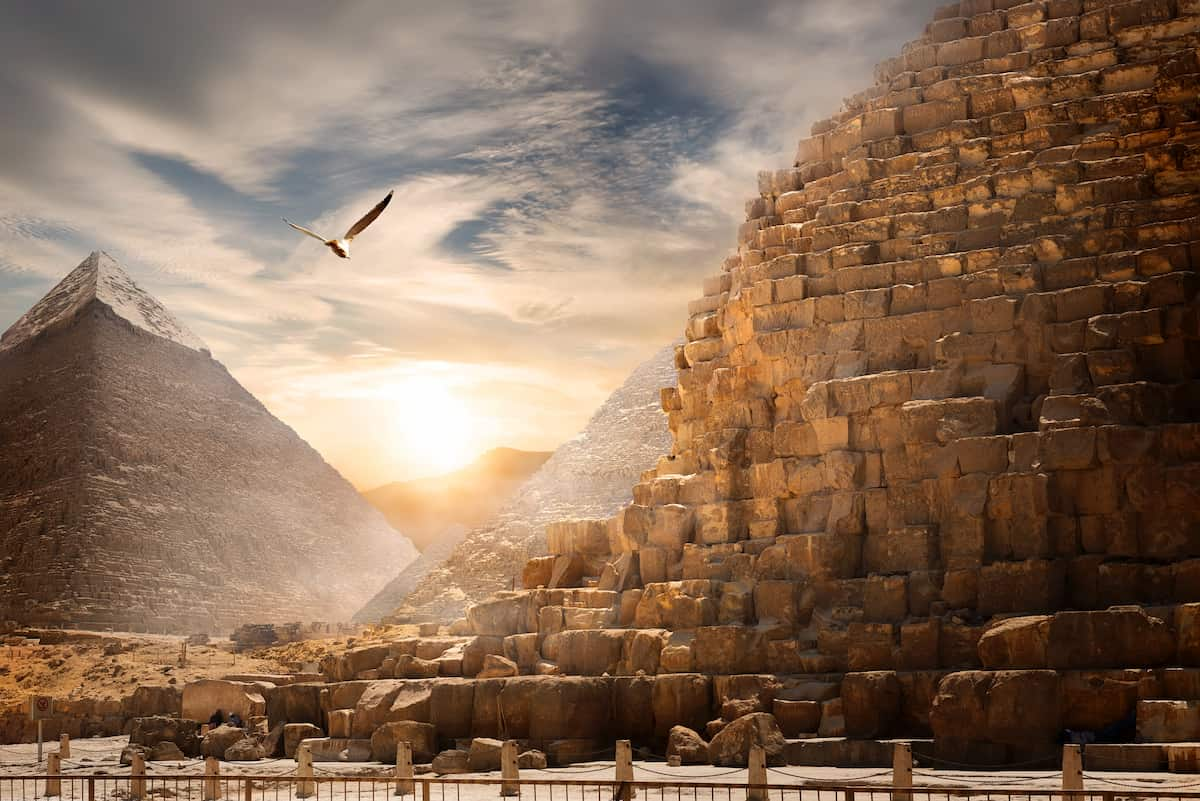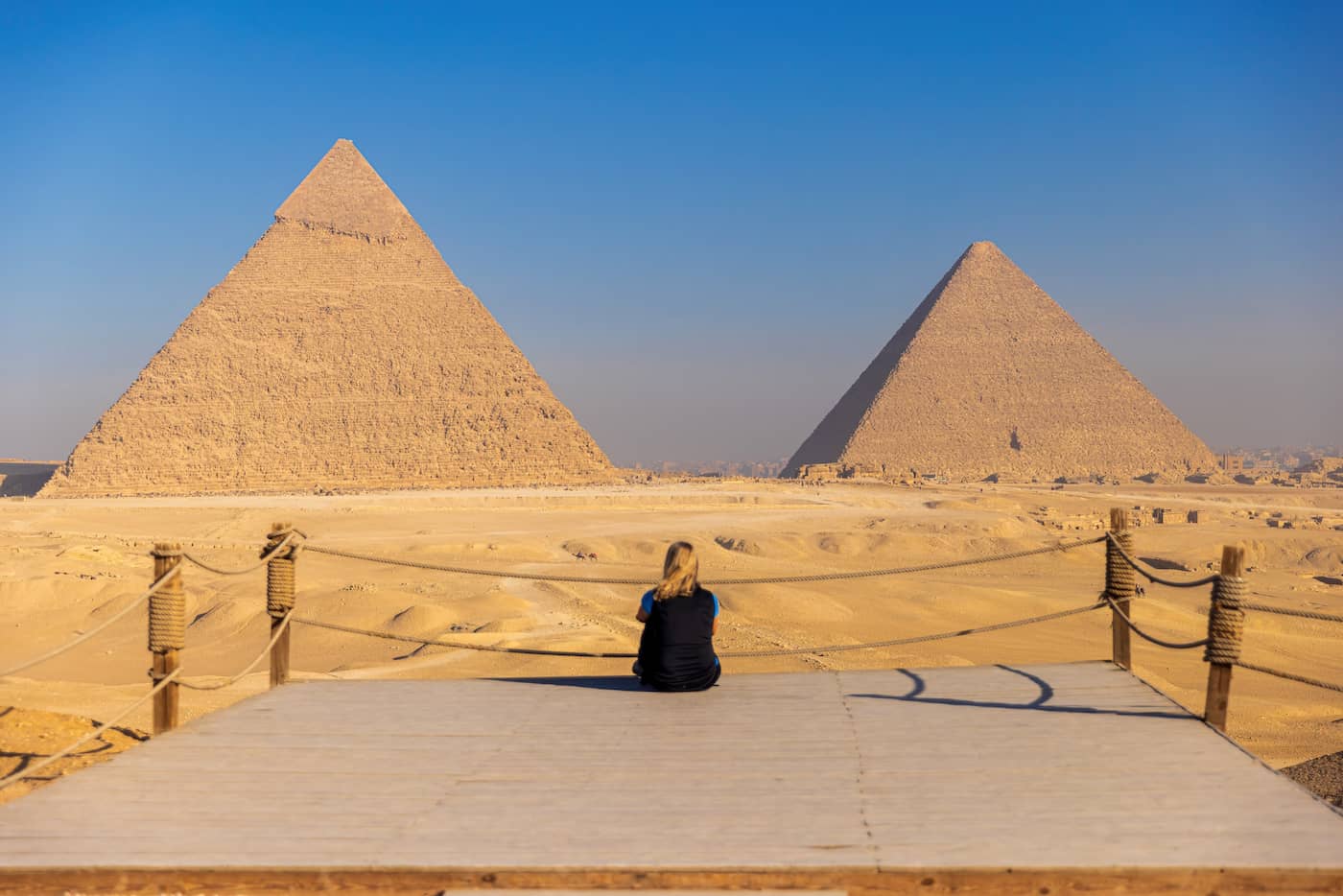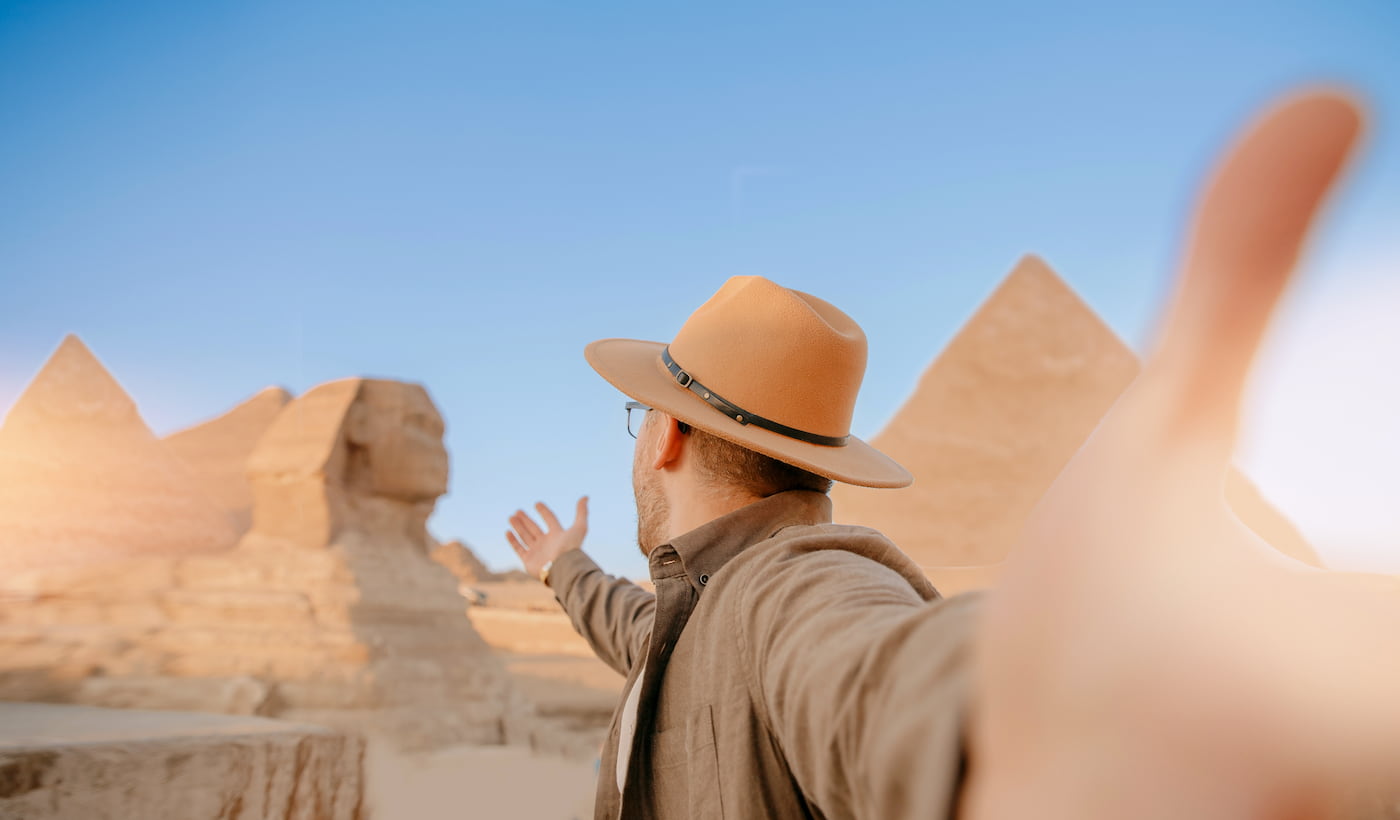Canopic Jars of Ancient Egypt: Guardians of the Afterlife
Canopic jars from Ancient Egypt are among the most important treasures from ancient Egypt. The ancient Egyptians used these containers during the embalming process to preserve and guard the internal organs of the dead. The term canopic results from an error on the part of earlier historians, but it stayed in use. These jars had nothing to do with the Greek town of Canopus, but that name stuck in modern history.
In ancient Egyptian culture, they prepared the body of a dead person for burial very carefully because he was supposed to live forever in the afterlife. This also included the removal of certain organs that could probably decompose. The canopic jars of Ancient Egypt were made to store these organs safely, with each jar having a lid that featured a head: sometimes a human, another time an animal, to serve as localizing figures of gods who would guard the organs.
Unquestionably, canopic jars are more than mere containers. They symbolize quite powerfully the art, the religion, and the worldview of ancient Egypt. They tell us how important the Egyptians considered the afterlife. Canopic jars exist in hundreds of museums around the world today. Seeing a canopic jar close by allows an individual to sense the care and respect, as well as the sacred meaning attached to mummification.
From simple clay particles to lovely, decorated, and hard stones, canopic jars offer one more avenue through which to explore an entire world of ancient Egyptian life, religion, and burial customs. They bind us to a civilization that thought of death as something other than an end: it was a new beginning. Understanding the jars helps us understand Egypt’s soul.
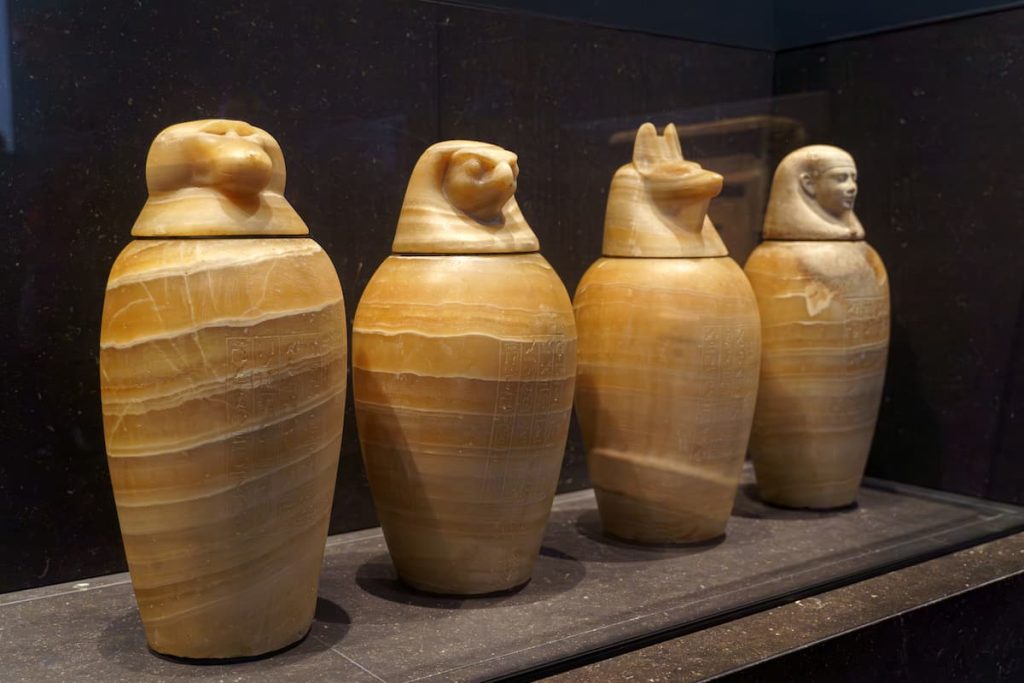
2. What Were Canopic Jars Used For?
In ancient Egypt, the canopic jars served an important role in mummification. The traditional embalmer would normally take out the internal organs of the deceased body because those organs could decay quickly and damage the body that had been preserved. Such organs as the liver, lungs, stomach, and intestines were placed in their respective jars, each of which was under the protection of a special god. The heart was normally left in the body, as it was considered to be the center of emotion and thought.
Preserving the Organs for Eternal Life
More than just containers, all these canopic jars carried deep religious symbolism. The ancient Egyptians believed that these organs could be called on in the afterlife, and hence, the storage had to be done respectfully. That is why each jar was protected by one of the Four Sons of Horus gods who had the job of guarding the organs and driving away evil. The four deities were represented on the jar lids by the forms of a man, a baboon, a jackal, and a falcon.
This whole canopic jar ritual firmly attests to the great Egyptians’ belief in life after death. It was believed that the body had to be intact for the soul to live again. Without the organs, the body would be incapacitated in the next world. Hence, these jars became an important part of both burials and the spiritual journey.
Some of these containers could have been used in burials, all at once, providing us with insight into the values and beliefs of ancient Egyptian society. These are not just items but means to comprehend how Egyptians put care into death because religion would be expressed in all forms of life and death. It was in this capacity that they became a key field of interest for the ancient Egyptians in history and art.
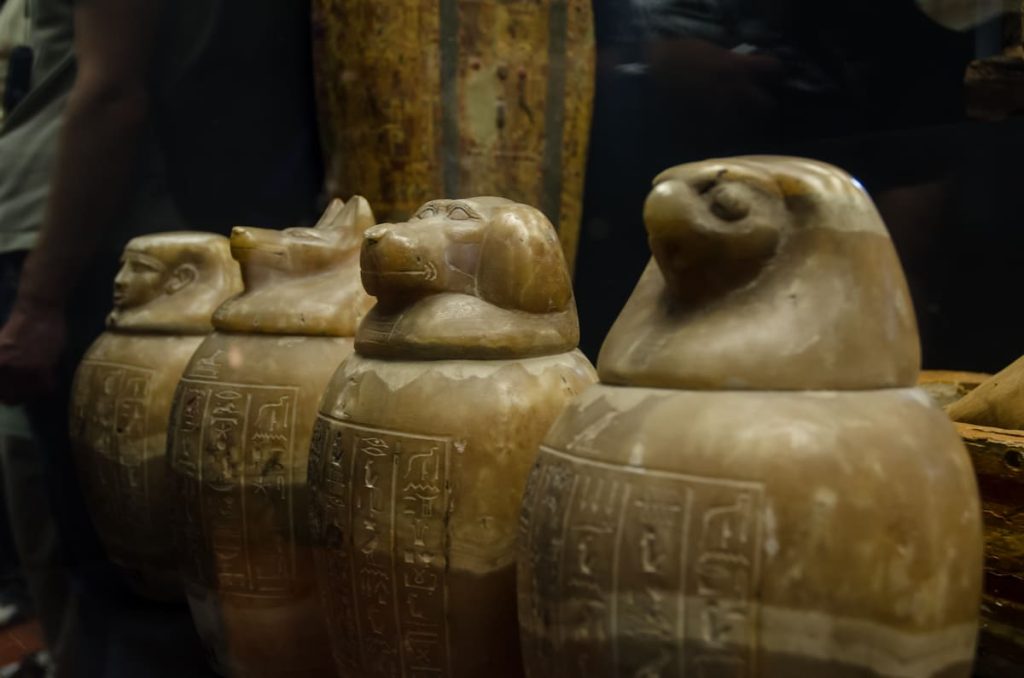
3. Religious Beliefs Behind Canopic Jars
In ancient Egyptian religion, death was perceived not as a closing act of life but as a mere opening act for the new journey. This all-encompassing belief ensured that every burial custom was maintained; among them, very important were the canopic jars. According to Egyptian ideology, the corpses had to be preserved to live eternally in the afterlife, so were the vital internal organs; hence, the need for these sacred jars.
Every canopic jar was assigned to a different god. The Four Sons of Horus were believed to protect particular organs. Imsety, human-headed, guarded the liver-god. Hapy, who had the head of a baboon, looked after the lungs. Duamutef, with the jackal head, safeguarded the stomach. Qebehsenuef, the falcon head, guarded the intestines. These gods were not merely adornments on the lids-they were the very protectors.
If the internal organs were not protected properly, the ancient Egyptians believed the soul could suffer or might not be reborn into the afterlife. That is why each jar was so carefully made and deposited with the mummy in the tomb. Often, the jars were “activated” by prayers and rituals referring to the gods they represented.
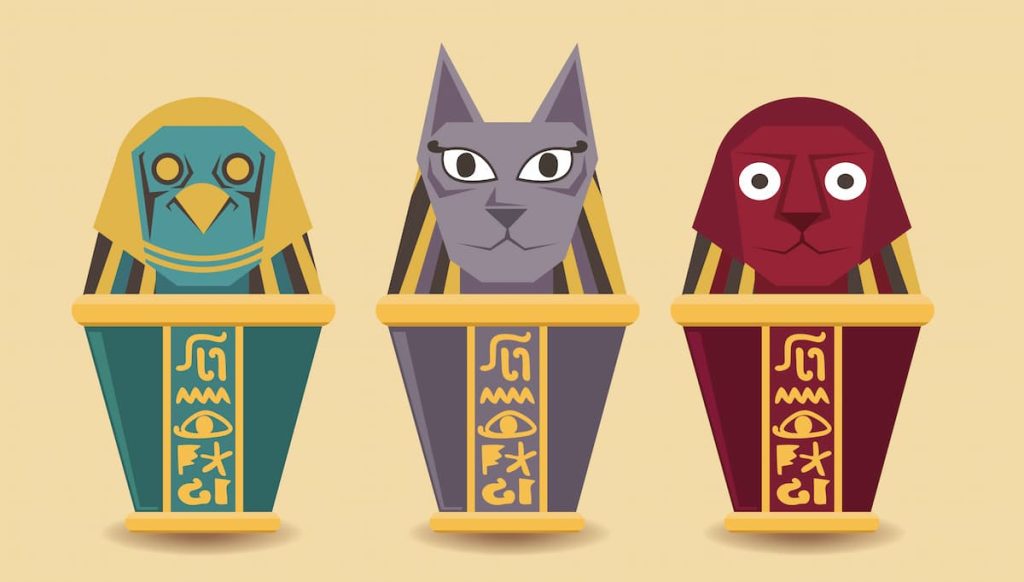
These religious beliefs grant great significance to the jars’ art and design. Every color, symbol, and form was selected with spiritual significance. Even in modern times, should one come across a canopic jar within a museum, one is looking at a potent symbol of an ancient faith marking a desire to be free and live forever. It is this link between religion, death, and the afterlife that is so much of Egypt’s inheritance, making canopic jars some of the most productive remnants of Egyptian culture and mummification art.
4. The Four Sons of Horus and Their Symbolism in Canopic Jars of Ancient Egypt
These four sons were known in tradition and were assigned to one of the four types of canopic jars in ancient Egypt, as the gods were believed to watch over and guard the dead organs on their travel to the afterlife. Imsety was for the liver, a human head, while Hapy, with a baboon head, protected the lungs. Duamutef, a jackal-headed god, was for the stomach; while Qebehsenuef, a falcon-headed god, was for the intestines.
These gods were related to strong beliefs in protection, healing, and eternal life. Sometimes, the Four Sons were also related to the four directions of the world to give cosmic balance. The jars each had a lid in the shape of the head of these gods. Inscriptions would sometimes request protection from these gods. This special design is an exquisite contribution to Egyptian art and religious history. The symbolic association of the gods and the organs is of greater religious implication for mummification practices. Often, canopic jars are displayed in museums, bringing Egyptian artistic prowess and deep spiritual impressions of their culture to light.
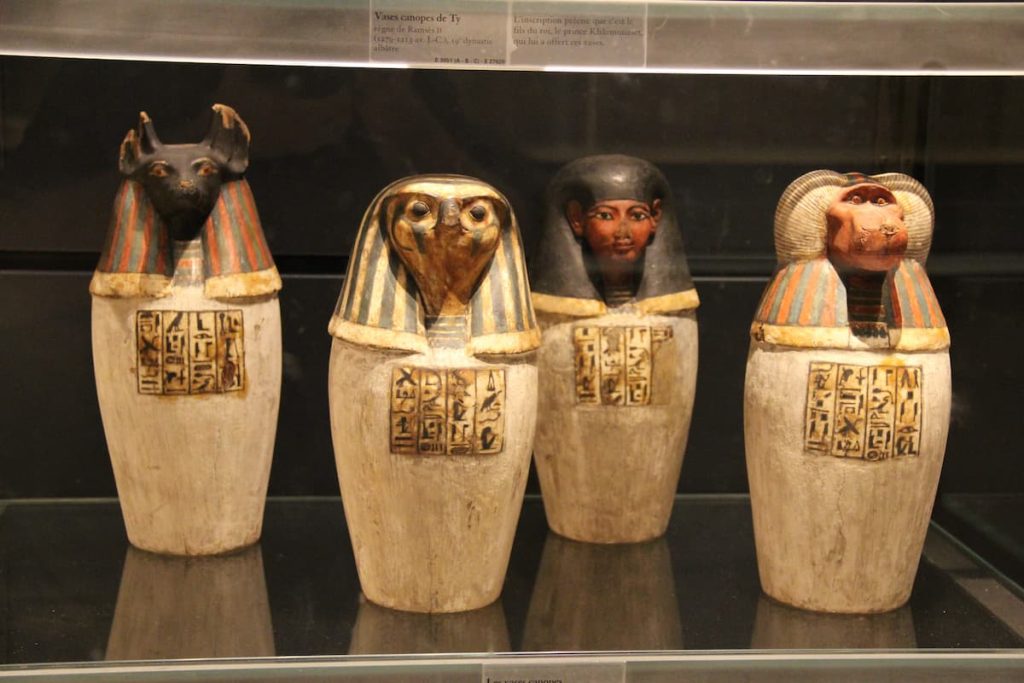
5. Design and Artistry of Canopic Jars
The beauty and detail of canopic jars reveal how much care the ancient Egyptians gave to the tombs of burial. Really, the jars were not considered utilitarian, but rather were viewed as sacred art, embodying the religious connotation and craftsmanship. Each of these jars was intended not just to accommodate organs but somehow to instill the might of the gods and the ideals of the deceased.
Tarquinian canopic jars were crudely made and consisted of pottery or limestone. Gradually, and in particular during the New Kingdom, the art rose to a finer pitch. These jars would more often than not have been carved out of alabaster and painted in rich colors, even for royalty, with traces of gold leaf at times! The main body of the jar would be inscribed with ancient Egyptian texts or spells, intending to safeguard the organs inside.
Sacred Symbols Carved with Divine Skill
The lid is the most striking part of the jar. These were carefully modeled to represent the heads of the Four Sons of Horus: one for the heart, one for the stomach, one for the lungs, and one for the liver. Some lids were smooth and human-like, while others featured intricate animal details such as baboons, jackals, and falcons. The design of each jar, therefore, indicated to which god it was dedicated and which organ it contained.
They were part of assemblages, beautiful canopic chests that would accompany the mummy in the tomb. The colors, shapes, and carvings on these sets provided information on the rank of the individuals and the period during which they lived. The rich and the pharaohs had jars that were artistic and finely made, whereas the countryfolk had hardworking and inartistic jars.
Nowadays, such exquisite canopic jars are exhibited in leading world museums. Their beauty tells the story of belief, of protection, and the skill of the hands that made them. They are eternal works of art and a living testimony to the history of Egypt and mummification practices.
6. Types of Materials Used in Canopic Jars
Canopic jars were quite vital, according to ancient Egyptians, in ensuring the safeguarding of the body after death. The jars were fashioned out of varying materials, depending on one’s wealth and the time. These jars were associated with the burial systems of the Middle Kingdom and the Twelfth Dynasty. At the very beginning, canopic jars were created out of materials that were easy to obtain, such as pottery and wood. The materials were simple but served their purpose. Those who were poor had their jars made out of these materials. Sometimes, the jars would be painted or inscribed with spells meant to protect the organs inside.
In the Middle Kingdom period, however, during the 12th Dynasty, these jars came to be made from more precious materials. Many were carved from stone, mostly alabaster. This stone is smooth and of light color, thus making the jars beautiful to behold. Limestone or granite was also sometimes used for these jars, but more rarely. These stone jars usually have writings on them, which were also meant for protecting the dead. Other than stone, another favorite was faïence, a shining blue-green type of ceramic. This color, the Egyptians believed, could give new life and provide protection, returns quite necessary for the afterlife. Jars made of faïence looked bright and special.
Gold and bright paint could also be lavishly applied to a king’s and an aristocrat’s jars, a mark of social distinction and perhaps for better protection of the body. By mixing various materials, the ancient Egyptians guaranteed utility and beauty. These jars speak volumes about the culture of ancient Egypt and the Middle Kingdom.
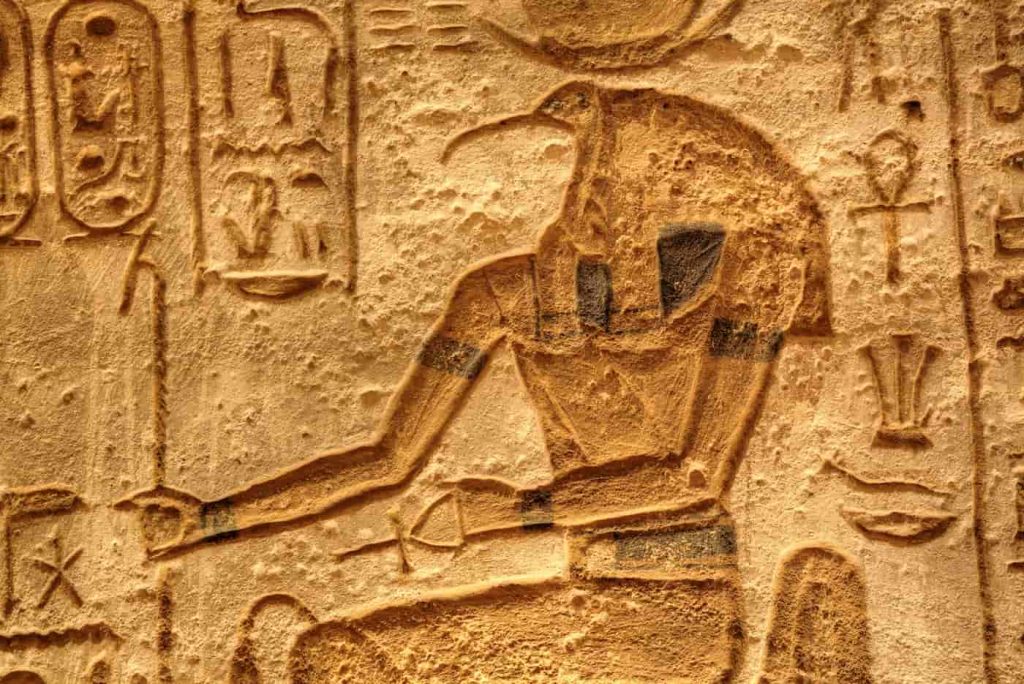
7. How Canopic Jars Were Placed in Tombs
In ancient Egyptian culture, canopic jars played an essential role in the ritual of burial. It was a very careful placement of the items in the tomb near the body of the pharaoh or a properly qualified person who had passed away. These were jars containing organs removed from the body during the mummification procedure, and their purpose was to serve in aiding the transfer of the dead into the next world. Sometimes during the Middle Kingdom and the Twelfth Dynasty, some canopic jars were kept inside canopic chests.
These chests were placed in the burial chamber of the tomb, near the mummy. Many a time, the chests might be painted with scenes and inscriptions of the gods and spells for the protection of the jars and the contents within.
Who Are The Four Sons of Horus
Each canopic jar’s lid would have the head of one of the Four Sons of Horus, said to be gods that protected different organs. The jars were laid out in the burial chamber so that each son could protect the organ contained within its jar. This arrangement attested to how much the ancient Egyptians believed in protecting the dead to safeguard their soul.
Also, the positioning of the jars indicated the rank of the pharaoh or noble interred in the tomb. Persons of wealth and power had large, elaborately decorated jars placed within grand chests, with the simpler jars of common folk set more modestly. Though for all, these jars were a significant part of the burial exercise. The canopic jars were merely one element of the larger assortment of items deposited in the tomb to assist the resurrected in their life in the hereafter. Their placing was one of the expressions of the religious beliefs of, and respect the Egyptians had for, the outcome of a human being after death.
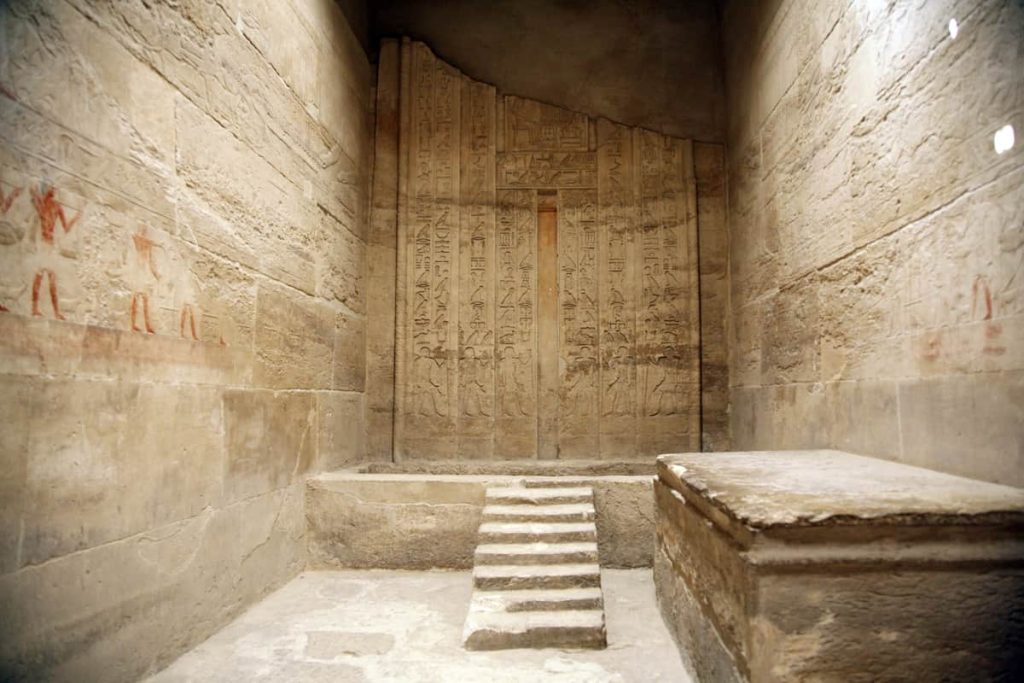
8. Canopic Chests: Protecting the Jars
Since canopic jars were very important in ancient Egypt, a tomb equipped with them had to provide a special and safe place to keep them. Hence arose the canopic chest. It is a vessel used to hold the jars during transit to the afterlife. By the time of the Middle Kingdom and especially in the period of the Twelfth Dynasty, canopic chests increasingly became common in the burial of kings and nobles. They were wood or stone boxes, sometimes even metal. On the boxes, gods, protective symbols, and spells were liberally carved and painted so that they would safeguard the contents within.
Canopic chests united all four jars in one chamber for protection in general. Each jar contained one-half of an important organ taken out during mummification to be protected from evil by the chest. The lids of the four jars had various types of heads representing the Four Sons of Horus, gods who protected each organ.
The safety of the jars must have been something very paramount for the ancient Egyptians, working on the logic that the body must remain intact for the actual resurrection of the dead in the afterlife. On the other hand, the decorations of the chest and its workmanship were evidence of the respect that was held for the dead by the pharaoh and his people.
The Canopic Chest Was Found Inside The Main Burial Chamber
More often than not, the canopic chest was found inside the main burial chamber, close to the mummy, and surrounded by other sacred items, thereby placing importance on the Egyptians in providing care for the body and soul. Today, an array of magnificent canopic chests and jars is found in various museums across the world. From these reticent artifact witnesses, we have just been able to gather faint Glimpses into the immense care and belief in life after death that ancient Egyptians were founded upon.
9. Changes in Canopic Jar Use Over Time
The usage of canopic jars changed over the period from the Old Kingdom to the Late Period. These changes indicated shifting factors in religion, art, and burial practices. Although initially the jars were for protecting the organs during mummification, in style, material, and manner of use, they slowly evolved with time. The earliest canopic jars of the Old Kingdom were plain. The lids were also simple, made of stone or pottery. They were rarely sculpted with images of gods or inscribed. Serving mostly pharaohs and very rich persons, occasionally only two jars were used instead of four.
During the Middle Kingdom, though more so in the Twelfth Dynasty, the kings, among them Amenemhat, refined both the form and import of the jars. Lids were provided for each jar bearing the head of one of the Four Sons of Horus, who protected different organs. The jars were of finer workmanship; they were placed inside canopic chests inscribed with spells and elaborately decorated with paintings embodying the fresh religious trend.
In the New Kingdom, they are even taller and more elegant, carved of alabaster, faience, and rarely gold inlays. Well-made canopic jars could be afforded by anyone who had a decent amount of money, even if not a king. By the time of the Late Period, they were still used but were sometimes left uncarved. The organs would be restored to the body or buried in separate wrappings as symbols. Either way, the jars remained very important in Egyptian burial rites. So, while the canopic jars changed shape and changed in meaning through time, in all cases, they stood for the care accorded to the dead and the deep-rooted belief system of the kingdom.
10. Famous Discoveries of Canopic Jars
Nowadays, canopic jars are generally regarded as very ancient Egyptian symbols. These beautiful and sacred objects could tell us about the contemporaneous ideas on death, religion, and what lay beyond for the pharaohs and people of the Middle Kingdom and other times. Though thousands of years old, their beauty and meaning continue to exist in museums, books, films, and modern culture.
Many tombs, especially of the Twelfth Dynasty, yielded a huge number of jars. King Amenemhat’s jars, along with the grand jars for other great rulers, were the most beautiful. These jars led us to understand how the Egyptians thought about their next journey, their care for the dead, and their deep spiritual beliefs. Their worldview and religion can be understood from the material of the jar, the colours used, and the gods portrayed.
Canopic jars are exhibited in many countries of the world as central relics of ancient Egyptian history, and visitors often look around in awe at their shapes, carvings, and colorings. These jars were more than mere containers; they were considered works of art. London retains the largest similar collection among the famous ancient cities. The story of the jars is carried on with care and reverence.
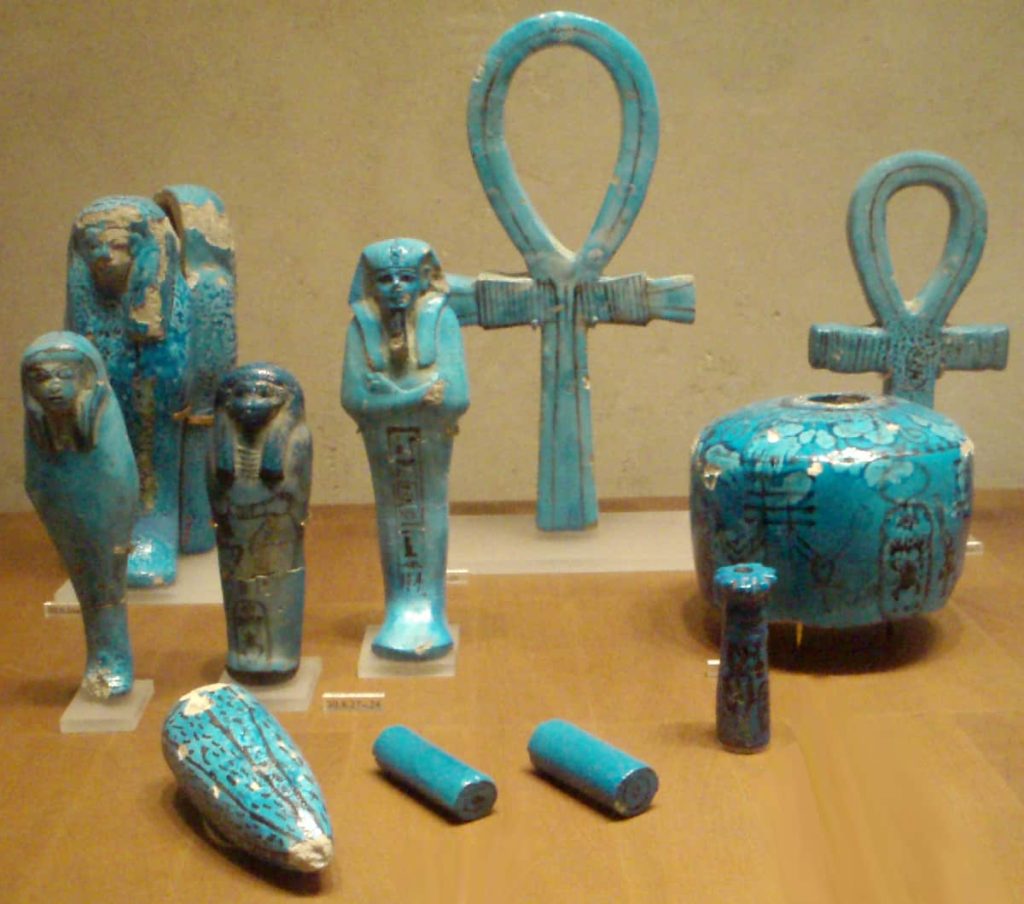
Outside the walls of the museum, their influence continues in school, documentaries, motion pictures, and games, all depict scenes featuring these jars. They allow a sense of wonder today because they conjure images of gods and mummies. The story of canopic jars is the story of an entire kingdom, a culture that respected the dead, believed in the protection of gods, and created beauty that still inspires. Through interventions like those of Amenemhet, the jars still speak of life, death, and how ancient Egyptians perceived themselves.
11. Modern Discoveries and Museum Displays of Canopic Jars in Ancient Egypt
The canopic jars discovered give important details about the remarkable finds made in the tombs of royal and powerful pharaohs of the Twelfth Dynasty. Burial sites of Amenemhat and other kings have yielded stunning examples of finely crafted canopic jars that reflect the skill and spirituality of ancient Egypt. These jars often arrive in the present day in pristine condition, featuring sculptured lids, smooth and polished stone surfaces, and protective inscriptions carved to guard the spirit of the dead. Each detail from the craftsmanship to the materials used reveals the reverence shown to the deceased and the deep religious practices tied to the afterlife.
Many of these historical treasures are now displayed in world-renowned museums. Visitors can view them in Cairo’s Egyptian Museum, the British Museum in London, the Louvre in Paris, and the Metropolitan Museum of Art in New York. Some are made of luxurious alabaster with intricate decorations, while others are more plain but no less valuable. The museum tags often explain which deity is featured on the lid and which organ the jar was meant to preserve.
Canopic jars are far more than ancient artifacts; they carry profound meaning and historical weight. They help modern scholars decode the complex burial customs of the Middle Kingdom, identify the gods worshipped during that period, and understand how much care and honor were given to protecting the dead, particularly when the deceased was a pharaoh or a member of the royal dynasty. Through these beautifully preserved jars, the legacy of King Amenemhat and the spiritual depth of ancient Egyptian civilization live on, reminding us of a kingdom where death was not an end, but a sacred journey into eternity.
12. Canopic Jars: Ancient Egypt in Modern Culture and Research
While the canopic jars still sit in museums, the ancient world of Egypt remains very much alive in present-day research and pop culture. These jars, once destined to hold the organs of pharaohs and nobles who journeyed into the afterlife, have become enduring symbols of mystery, history, and religion. Their mythology has taken root in modern storytelling and now thrives in literature, films, television, and video games.
In nearly every Egyptian-themed movie or game, canopic jars are depicted as magical containers hiding treasure within secret tombs. Though fictional, these images reflect how strongly the legacy of the Middle Kingdom, the Twelfth Dynasty, and rulers like Amenemhat still resonate today. They act as creative anchors in tales of curses, lost civilizations, and immortal pharaohs. These plots, though myth, serve to keep the memory of an ancient kingdom alive in modern culture.
Eternal Legacy of Canopic Jars
Meanwhile, experts and scientists, Egyptologists, are actively studying these jars to understand more about ancient Egyptian life. With advances like 3D scanning, chemical analysis, and digital modeling, researchers are now able to examine the jars in incredible detail without damaging them. The inscriptions and materials provide information about religious beliefs, mummification, and cultural practices tied to each king, including Pharaoh Amenemhet.
The value of the canopic jars lies not only in their physical form but also in their ability to connect us with a civilization thousands of years old. Whether displayed in a museum, studied in a lab, or dramatized on screen, these sacred vessels continue to stir the imagination. They offer a fleeting yet powerful impression of a world shaped by gods, kings, and the deep beliefs of a timeless kingdom.

